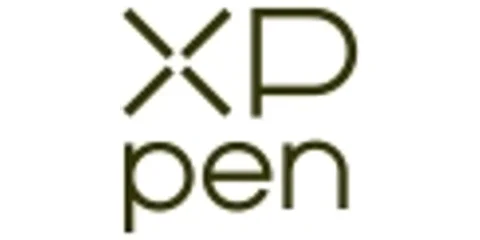

Copy this code and use at checkout


Copy this code and use at checkout


Deal Activated, no coupon code required!


Deal Activated, no coupon code required!


Copy this code and use at checkout


Copy this code and use at checkout


Deal Activated, no coupon code required!
Here’s a detailed overview of XP-Pen — what the company is, what products they offer, how they compare to alternatives, and pros & cons.
What is XP-Pen
-
XP-Pen (stylized as XPPen since about 2022) is a company that designs and sells graphics tablets, pen displays, digital art tools, accessories, etc.
-
It was founded in 2005 by a Taiwanese manufacturer P-Active.
-
The company is now headquartered in Shenzhen, China, and is part of the Hanvon UGEE Group (a larger group in the graphics tablet / digital art hardware industry).
-
They have a research & development presence (and operations) worldwide, and sell in many countries (reports say 163 countries / regions) serving millions of digital art users.
Product Lines / What They Offer
Some recent highlights:
-
Their Magic Note Pad is making waves as a hybrid note/drawing pad device that simulates “pen on paper” feel via a nano-etched surface and multiple display modes.
-
They’ve pushed new Artist Pro display models with 4K resolution and 165 Hz refresh rates, along with strong color accuracy (Calman verified, etc.) and advanced stylus (16K pressure) options.
What XP-Pen Does Well (Strengths)
Here are some of their strengths, based on reviews, user feedback, and comparisons:
-
Good value / range
-
XP-Pen provides products across many price points — from entry tablets to high end pen displays — which helps artists at different budget levels.
-
Their higher end displays (4K, high refresh) compete strongly with more expensive brands.
-
-
Innovation / feature push
-
They are introducing new features: e.g. Magic Note Pad, and high refresh pen displays, strong color management, etc.
-
They keep improving on stylus pressure sensitivity (e.g. 16K) in newer models.
-
-
Global reach and ecosystem
-
They have a large presence in many countries, and support many users via agents, service centers etc.
-
Their branding, software support, accessories, and ecosystem (drivers, calibration tools) are reasonably established for drawing hardware.
-
-
Strong performance in display models
-
Reviews of newer high-end models praise the smooth drawing, good color calibration, responsiveness, etc.
-
Weaknesses / Common Complaints & Risks
No brand is perfect. Some of the drawbacks and watchouts include:
-
Software / drivers / stability issues
-
As with many drawing tablet companies, driver bugs, compatibility problems or updates lagging behind sometimes cause headaches. (Users often mention these in forums.)
-
Occasional reports of inconsistent performance across OS updates.
-
-
Build or component consistency
-
Some units may have minor build defects, or parts that vary (e.g. pen nibs, screen coatings, etc.)
-
Over time, cheaper models might exhibit wear, drift, or loosening buttons etc.
-
-
After-sales / warranty support variability
-
Depending on your region, getting repair or warranty service may be harder; shipping display tablets for servicing could be expensive or slow.
-
Some sellers (non-official) may be gray imports without full support.
-
-
Cost / premium models
-
High end displays cost a lot (especially with features like 4K + high refresh), so the price is high compared to regular tablets.
-
For users who don’t need a display, paying for a monitor + display features isn’t always cost-effective.
-
-
Competition & expectations
-
Competing with established names (like Wacom, Apple iPad Pro, others) means that users expect perfection; small errors or less polished parts get criticized.
-
Some users may prefer more mature software/hardware ecosystems (e.g. color accuracy, desktop integration) offered by long-time leaders.
-
Comparison With Other Brands (Brief)
-
Compared to Wacom: Wacom has long been seen as the gold standard for drawing tablets, especially in professional / studio environments. XP-Pen offers more aggressive pricing / features per dollar, but Wacom might still be better in support, durability, driver stability in some workflows.
-
Compared to Huion / Gaomon etc.: XP-Pen is often on par or better in display models, pushing innovation (higher refresh, 4K), and sometimes better software support. Differences may come down to model, region, and specific use case.
-
For non-display (pen tablets), XP-Pen often competes very well in price / features for students / hobbyists.
Suggested Product Example
One representative product: XP-Pen Artist Pro 16 (Gen 2) — a pen display with strong specs (4K, color accuracy, etc.).
This kind of model shows the premium direction XP-Pen is going in display tablets.
Should You Buy an XP-Pen Device?
Here’s when it makes sense, and when you might be cautious:
Good idea if:
-
You do digital art, illustration, animation, design work, etc., and want a drawing device.
-
You prefer a display (draw directly on screen) and want high performance.
-
You want more value for money rather than paying big for premium brands.
-
You are comfortable dealing with software/driver updates and “tweaking” your setup (common in the drawing tablet world).
Be cautious if:
-
You depend on flawless, rock-solid driver support (especially in mission-critical professional settings).
-
You need excellent service / repair locally (especially for large display tablets) and your region lacks support.
-
You’re unsure whether you prefer a display or a simple pen tablet — buying a display is more expensive.
-
Your budget is limited and you only need basic pen input — investing in the top models may be overkill.

